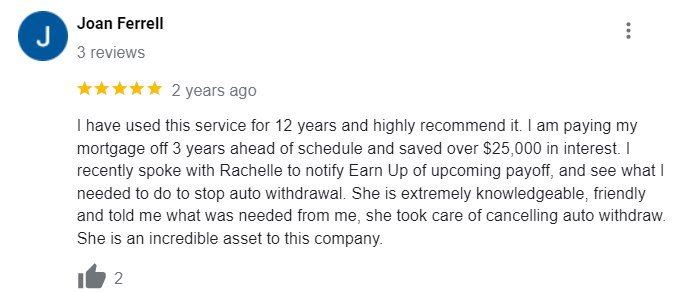You’ve heard of budgeting, but what about a zero-based budget? Maybe you’re buried under bills or tired of coming up short. Instead of just hoping for the best, this approach gives your money a purpose every single month. Whether you’re just getting started or want to refine your approach, let’s take a closer look.
Zero-Based Budget: What Is It?
The concept is pretty simple. Instead of building your budget on previous spending and making adjustments, you start fresh each month. You give every dollar a job.
It forces you to think about every expense, asking “Do I need this?” instead of “Can I squeeze this in?”. A zero-based budget may seem intimidating, but it’s not as scary as it sounds.
It’s a powerful budgeting method that can give you more control over your money. Plus, once you get the hang of it, it’s easier than traditional budgeting. Let’s get started.
How to Make a Zero-Based Budget Work
Track Your Income and Expenses
Write down your total monthly income. Next, look at your bank statements and credit card bills.
Note every expense, big or small. There are many personal finance websites and apps that help you do this automatically.
Create Spending Categories
Divide your expenses into different buckets. Think “Needs” versus “Wants”, but personalize them.
Your “Netflix Night” category is different than “Utilities”, even if both come from the same account.
Allocate Your Income
Here’s the zero-sum magic: subtract your total expenses from your income. Ideally, this should be zero, indicating every dollar is accounted for.
If your expenses exceed your income, adjustments are needed. This method helps you prioritize spending and stay within your means.
Make Adjustments as Needed
Life happens. Unexpected expenses pop up, and sometimes you underestimate your spending in a certain category.
The beauty of the zero-based budget is that it allows for adjustments. Simply take money from categories with surpluses or reduce spending elsewhere. Remember, every dollar has a job.
Advantages of Using a Zero-Based Budget
Here are just a few advantages to using this method:
- Better control over spending: A zero-based budget forces you to be intentional with every dollar, which can lead to a reduction in unnecessary spending. It shines a light on your financial habits. This helps identify bad spending decisions before they become major issues. This conscious allocation brings about mindful spending, steering you away from impulsive purchases.
- Eliminates wasteful spending: Zero-based budget is famous for its laser focus on identifying and eliminating wasteful spending.
- Increased savings: By allocating funds to savings and emergency fund goals upfront, this budgeting style fosters a saving mindset. It makes it easier to reach your financial goals like paying off credit cards and student loans.
- Financial awareness: Zero-based budgeting provides you with clarity about where your money is going each month. You’ll gain a comprehensive understanding of your cash flow. This is especially helpful if you don’t have a fixed income and your budget varies month to month.
- Financial flexibility: Unlike traditional methods, it empowers you to dynamically adjust your spending based on changing needs or unexpected situations. It enables quick adaptation to unforeseen circumstances like job loss, medical emergencies, or unexpected home repairs. By revisiting and revising, it encourages you to actively manage your money each month instead of going on autopilot with a static budget.
Potential Challenges with a Zero-Based Budget
Budgeting challenges can arise even with the best methods, and that goes for zero-based budgeting too. But forewarned is forearmed:
- Time commitment: Zero-based budgeting requires dedication. Creating and maintaining one requires consistent attention and effort. This can pose a challenge, especially initially or during busy periods.
- Overly restrictive for some: This approach may be viewed as restrictive, especially for those accustomed to more flexible budgeting styles. Some people may find that diligently tracking every dollar is too rigid, time-consuming, or limiting, especially those comfortable with a looser budgeting approach. This approach forces careful consideration of needs and wants, which may initially feel limiting, but helps prevent overspending.
- Requires discipline: The zero-based budgeting method demands consistent adherence. It is about actively managing your finances each month to succeed.
- Potential for error: Zero-based budgeting requires accurate income and expense tracking.
Examples and Case Studies
John, tired of being in credit card debt, used the zero-based budget to finally get ahead. Instead of feeling overwhelmed with money constantly slipping through his fingers, the budgeting process forced him to make a plan for every dollar. This gave him greater awareness and control over his spending. Through careful allocation and adjustments, John paid off the balance of his credit cards. He’s now able to move on to his new financial goal of growing his savings accounts.
FAQs about Zero-Based Budgeting
What is meant by zero budget?
A zero-based budget means starting your budget from scratch each month, giving every dollar a designated job. This ensures that your income minus expenses equals zero.
What is a zero-based budget and why is it important?
The zero-based budget prioritizes aligning spending with values. It advocates for a debt-free lifestyle by carefully allocating every dollar to necessities, debt repayment, and savings.
What is good about a zero-based budget?
Zero-based budget shines when it comes to identifying and trimming unnecessary expenditures. It encourages greater control over your finances and promotes better saving habits.
Conclusion
Zero-based budgeting empowers you to be intentional and thoughtful with your finances. This approach allows you to make conscious decisions about every single dollar you earn, ensuring that your money is working towards your goals and values.
By adopting a zero-based budget, you’ll be amazed at how it can positively impact your financial well-being and overall quality of life. So, take the first step today, work hard towards giving each dollar a job to do, and start building a brighter financial future.










